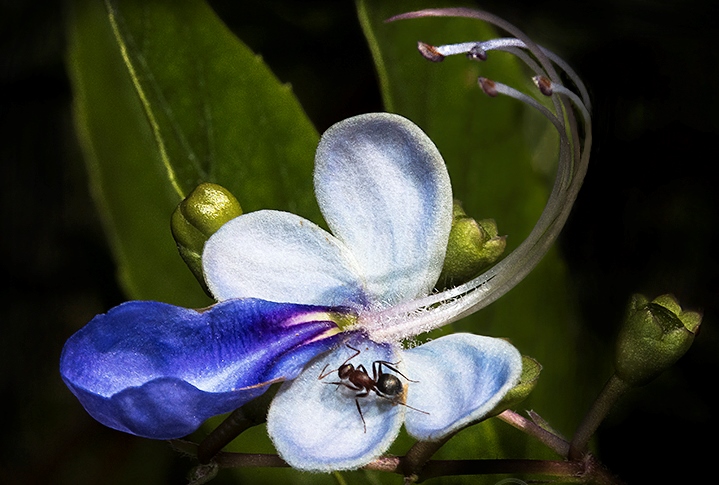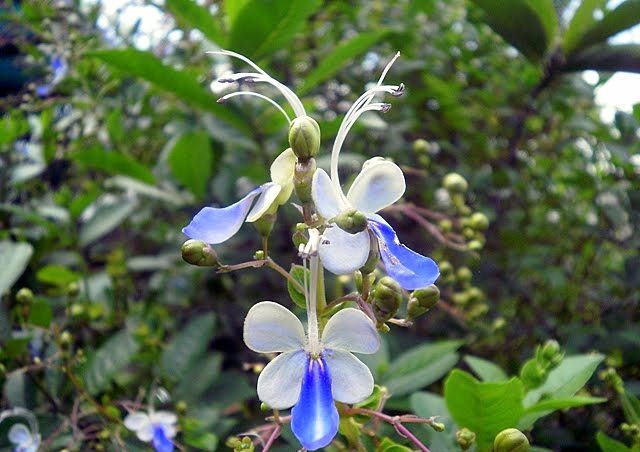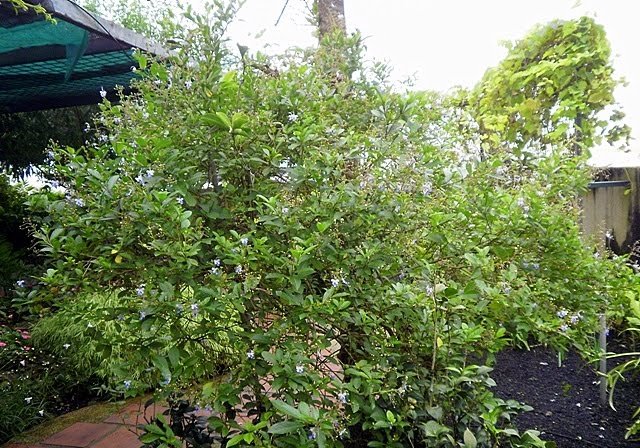Blue Butterfly Flower

This is a plant with showy sky blue flowers that look very much like butterflies and it also attracts butterflies.
It has many common names:
English : Blue Glory Bower, Blue Butterfly Flower, Clerodendron, Blue Butterfly Wings, Butterfly Bush, Oxford Bush, Cambridge Bush
Chinese : 紫蝶花 (zi die hua) meaning Purple Butterfly Flower,
Malay : Semak Bunga Kupu-kupu Biru meaning Blue Butterfly Flower Bush

Scientific name: Rotheca myricoides
Synonym: Clerodendrum ugandense
Family: Lamiaceae (fomerly Verbenaceae)
Origin: Kenya, Uganda, East Africa

The flowers occur in loose panicles (clusters) as inflorescenses borne at the ends of long, arching branches. Each flower is about 1″ (2.5cm) long and composed of 5 lobed petals, of which 4 are pale blue and 1 violet-blue. There are 6 showy stamens made up of 6 long arching pale blue filaments and dark blue anthers. It blooms continuously throughout summer and fall. In the tropics, it blooms the whole year through. Each flower lasts only a day.

The evergreen leaves are bluish-green, opposite, elliptical and strongly toothed, about 7-10cm long.
I’m sure you can see why the flowers are described as “show-stoppers” and “head-turners”.

Grow in moist, well drained soil under full sun to partial shade. It grows vigorously and require little maintenance. Water regularly. Fertilize during growing season. Watch out for aphids attack. Propagation is by softwood cuttings.
This plant is used in landscaping and it is also suitable as container or house plants.

The flowers which are nectar-rich attract a lot of butterflies and carpentar bees, wasps and even the occasional humming birds. They just can’t stop loving them.

Clerodendrum ugandense is an upright, open and sprawling shrub that can grow to a height of 10 ft. The branches resemble canes. Some harsh prunning will result in another round of vigorous flowering.
Caution: Handling of plant may cause allergy or skin irritation. Parts are poisonous if ingested. Be careful of bees and wasps which may sting.

Comments are closed.